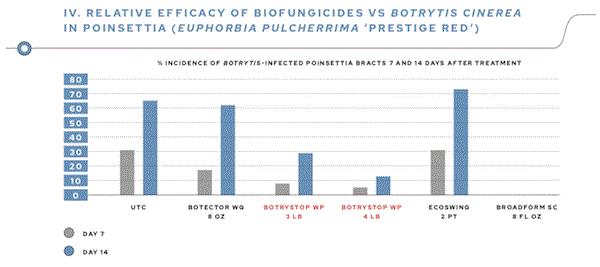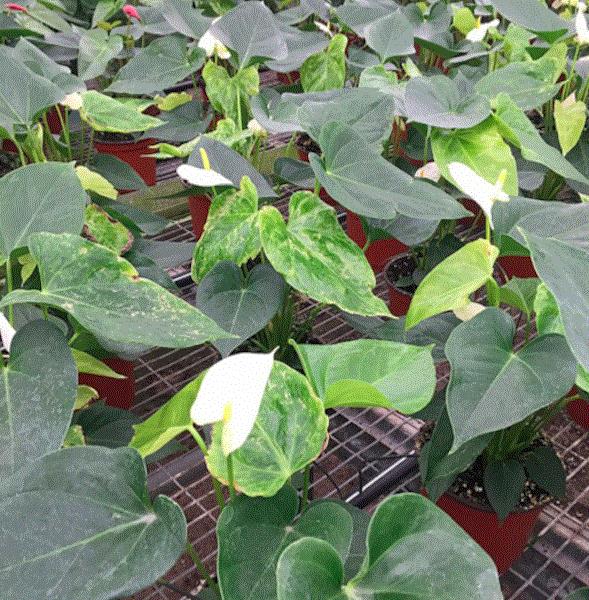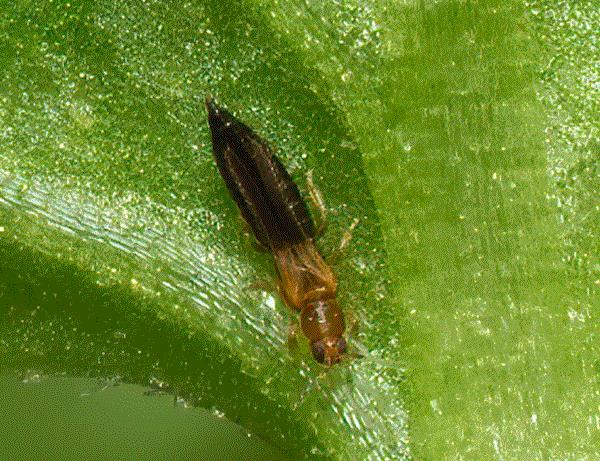BioWorks introduced a new BotryStop formulation
BioWorks launched BotryStop WP, a new formulation of Ulocladium oudemansii (strain U3), last week. WP stands for wettable powder. The original BotryStop is a water dispersible granule formulation. Both formulations form a suspension in the spray solution and require constant agitation to maintain a good suspension of the particles and active ingredients.
So, what’s the benefit of the WP formulation, you ask? According to a technical white paper prepared by Michael Brownbridge, Biological Program Manager of BioWorks, the new formulation removes insoluble components from the inert ingredients, which makes BotryStop WP easier to mix and apply, and more shelf-stable. BotryStop WP can be stored at room temperature (without refrigeration) for a year.

BotryStop WP is a biofungicide registered for management of botrytis (gray mold, specifically Botrytis cinerea), white mold (Sclerotinia sclerotiorum), brown rot (Monilinia), xanthomonas leaf spot and other foliar diseases on various ornamental plants, strawberries, fruits, nuts, vegetables, tobacco and hemps in both indoor and outdoor productions. Xanthomonas is a new target disease on BotryStop WP label. Ulocladium oudemansii forms a protective layer on plant surfaces after application and competes with pathogenic microbes for nutrients and habitats. The risk of resistance development against this mode of action (antagonistic competition) is low. Ulocladium oudemansii doesn’t invade living plant tissues, so it doesn’t cause disease or damage.
BotryStop WP is registered for both conventional and organic production (OMRI certified). The restricted-entry interval (REI) is four hours, and there is no pre-harvest interval so workers can enter the area to harvest after the REI has expired. Required personal protective equipment (PPE) are coveralls, waterproof gloves, shoes plus socks.
BotryStop WP is currently registered in all states, except California. Registration in California is pending and registration filing in Canada is pending. Click HERE for more information on BotryStop WP.

BotryStop WP efficacy and use tips
BioWorks claims that BotryStop WP is 40% more effective than other control options. Is that really true?
One example BioWorks provided in its technical white paper and brochures is the management of botrytis on poinsettias in greenhouses, conducted by Mary Hausbeck and Blair Harlan of Michigan State University. Mary and Blair compared the efficacy of BotryStop WP (applied at 3 and 4 lb. per 100 gal.) to two biofungicides (Aureobasidium pullulans or Botector WG at 8 oz. per 100 gal., and extract of Swinglea glutinosa or Ecoswing at 2 pt. per 100 gal.) and one conventional fungicide (fluopyram + trifloxystrobin or Broadform SC at 8 fl. oz. per 100 gal.). Botrytis infection was evaluated at seven and 14 days later. Broadform prevented botrytis infection completely. Plants treated with BotryStop WP at 4 lb. per 100 gal. suffered about 12% infection at 14 days after treatment, which was significantly better than the untreated control (about 65% infection), Botector (about 62% infection), and Ecoswing (about 72% infection).

Source: BioWorks.
I was also looking for data on outdoor crops because BotryStop WP is registered for such sites. I went to the IR-4 Environmental Horticulture Database, but I found very few studies. And, as typical of many pesticide efficacy trials, the data on BotryStop WP point to different conclusions about its efficacy because of different methodologies, crop systems and environmental conditions. Obviously, the body of independent research is still too small to make conclusion about the efficacy of BotryStop WP across the board. Additional studies have been planned by IR-4, so we’ll get more information and develop better ways to use this product down the road.
Although growth is possible at 50F (10C), the optimal growth of Ulocladium oudemansii occurs between 68F and 75F (20C to 24C). Growth stops when temperature exceeds 86F (30C). So, keep this temperature range in mind when using BotryStop WP. Because of the sensitivity to high temperature, this product should not be applied via a thermal fogger.
For more information on the efficacy and tips on using BotryStop WP, check out the product information website and the technical white paper published by BioWorks.

Thrips wreaking havoc
You know something is bad when three people who are always in the center of the action tell you that a pest is really getting out of hand. That’ll be the case of a relatively new invasive thrips species, Thrips parvispinus (no common name). I’ve heard about this thrips species for some time. When Dennis Bunkley of SePRO, Lance Osborne of the University of Florida, and Aaron Palmateer of Harrell’s told me (one after another within a span of two days) about how concerned they are about the status of this species in southern and central Florida, I thought I should sound the alarm to y’all in this newsletter.
This thrips species is native to tropical Asia, and has been causing significant problems to ornamentals, fruit and vegetable production in that region for years. It was found in Europe in the mid- to late-2010s. The first sample of Thrips parvispinus in the continental United States was collected in a greenhouse in central Florida in July 2020. In the United States, this species is known only from Florida and Hawaii. Genetic study suggested that the population found in Florida likely originated from Indonesia.

Anthurium damaged by Thrips parvispinus. (Source: Felipe Soto-Adames, Florida DACS Pest Alert)
In Florida, this species causes damage mainly on the leaves, growing tips and stems. Recorded host species in Florida include anthurium, cocoplum, eggplant, gardenia, hoya, peppers and schefflera. Additional host species are known from other countries. The list of susceptible species will undoubtedly expand as this thrips species spreads. The damaged tissues are scarred and distorted, and don’t recover as the plants grow. This thrips species is not known to vector tospovirus.
Very little is known about the biology of Thrips parvispinus. Based on a study conducted on pepper plants grown in a greenhouse in Indonesia, it takes about 14 days for a female to complete development from egg to adult. She will then lay about 15 eggs in nine days. These eggs are inserted into plant tissues. The baby thrips hatch within a week, come out from the plant tissues, and start feeding on the most tender tissues, such as young shoots, expanding leaves or flower petals.

Manage Thrips parvispinus infestation
Every pest management plan starts with pest identification. So, let’s learn how to identify Thrips parvispinus.
An adult female Thrips parvispinus has a brown head, yellowish or light brown thorax, and dark brown or black abdomen. Males are smaller and entirely yellow. Keep an eye out for thrips that mainly damage leaves, stems and flower petals, and doesn’t look like western flower thrips (yellow in color), chilli thrips (yellow), echinothrips (black with white band), and onion thrips (color ranges from yellow to brown, without a band on thorax). They may be Thrips parvispinus. Now, I said “may be” …
Distinguishing one thrips species from another sound simple, right? No, it’s actually not simple. Because so many of the thrips species look alike, it’s best to send in samples and let the experts at your local diagnostic service identify the thrips to species. That way, you’ll have the confidence in knowing that the diagnosis is done right, and your management plan is tailored to achieve success against the damaging species.

An adult female Thrips parvispinus on a pepper leaf. (Photo credit: Lance Osborne, University of Florida).
Currently, it’s difficult to develop a management plan for this thrips species because information on the efficacy of insecticides and biological control agents isn’t available. What growers in Florida do is to throw the kitchen sink at the thrips. Based on the data I have on other foliage-feeding thrips species, mainly chilli thrips, echinothrips and other Thrips species, I think Conserve (spinosad), Avid (abamectin), Pylon (chlorfenapyr), Mainspring (cyantraniliprole), and Hachi-Hachi (tolfenpyrad) are good options. Lance reported that some growers have found success with Orthene (acephate), Pedestal (novaluron), Hachi-Hachi, and XXpire (spinetoram + sulfoxaflor).
Research is being conducted by folks at the University of Florida as I write. So, hopefully there will be some data or solutions available soon. I’ll update you on management options as soon as new information or resources become available. In the meantime, click HERE to find out more about Thrips parvispinus.





See y’all later!

JC Chong
Professor of Entomology at Clemson University
This e-mail received by 27,847 subscribers like you!
If you're interested in advertising on PestTalks contact Kim Brown ASAP!